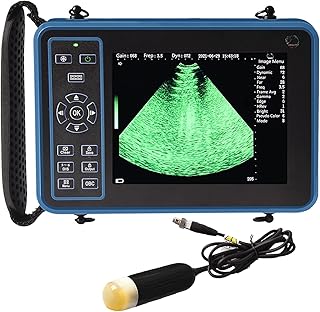In the realm of critical care, the use of ultrasound technology has evolved to offer a unique perspective on diaphragmatic movement. This innovative approach enables a detailed assessment of diaphragm excursion, which has proven to be a valuable predictor of successful mechanical ventilation weaning. The conventional M-mode ultrasound has been a mainstay in assessing diaphragmatic movements, but its limitations have prompted the exploration of more advanced techniques.
The introduction of speckle tracking ultrasound has revolutionized the evaluation of muscle function and organ motion, providing insights into velocity, displacement, strain, and strain rate. This technology tracks tissue movement by analyzing the speckle patterns in ultrasound images. While speckle tracking has been widely used in echocardiography, its application in diaphragmatic assessment is relatively new. The scarcity of data on the relationship between automatic speckle tracking imaging and weaning outcomes in critically ill patients prompted a pilot study to explore its predictive value.
A prospective multicenter observational study was conducted involving 160 critically ill subjects undergoing speckle-tracking ultrasonography of the diaphragm before a spontaneous breathing trial. The study aimed to compare automatic speckle tracking measurements with manual M-mode ultrasound assessments of diaphragmatic excursion and velocity. The results revealed a significant correlation between automatic and manual measurements, with high diagnostic value in predicting weaning outcomes.
Among the patients who completed the follow-up, a notable incidence of weaning failure was observed. The study highlighted the potential of automatic speckle tracking analysis in predicting prolonged weaning, weaning failure, and adverse in-hospital outcomes. The findings emphasized the importance of diaphragmatic assessment in guiding clinical weaning strategies.
The study’s methodology involved advanced speckle tracking technology to automatically measure diaphragmatic parameters, offering a standardized and comprehensive approach to diaphragm function analysis. The results underscored the potential of this novel measurement method in enhancing the accuracy and predictive power of diaphragmatic assessments.
While the study presented promising results, it acknowledged certain limitations, such as the small sample size and the need for further validation through larger multicenter studies. The integration of speckle tracking technology in diaphragmatic assessment opens up new possibilities for evaluating respiratory muscle function and predicting weaning outcomes in critically ill patients. This innovative approach holds significant promise in optimizing ventilator management and improving patient care in intensive care settings.
📰 Related Articles
- Ultrasound Bursitis Predicts Psoriatic Arthritis Development in Psoriasis Patients
- Study Reveals Finger Length Predicts Marathon Success
- Optimize SEO Performance: Tracking Tools and Strategies for Success
- How Does Ultrasound Predegeneration Impact Nerve Grafting Success?
- Early Labor Ultrasound Predicts Birth Complications in Babies






